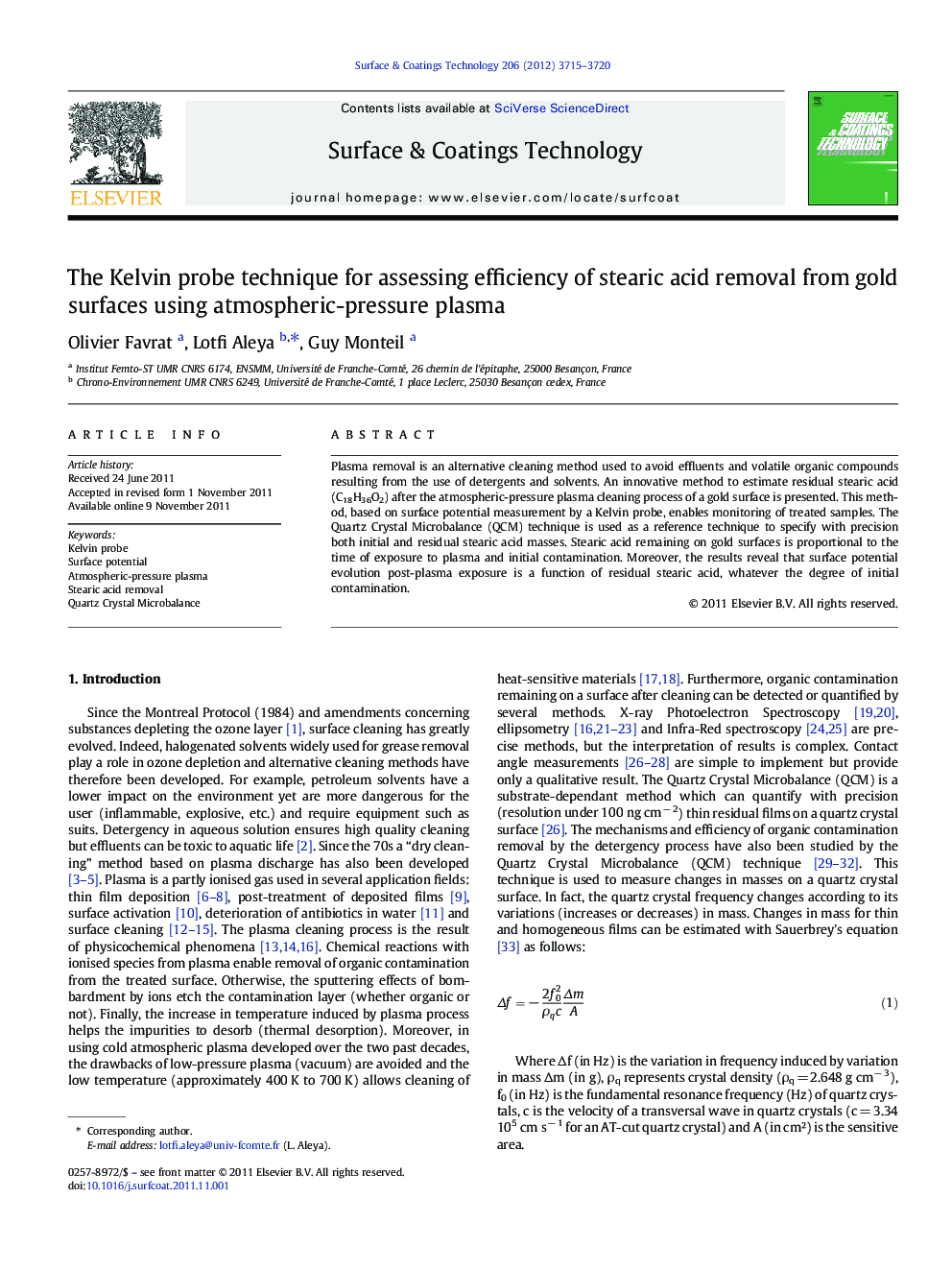| Article ID | Journal | Published Year | Pages | File Type |
|---|---|---|---|---|
| 1658505 | Surface and Coatings Technology | 2012 | 6 Pages |
Plasma removal is an alternative cleaning method used to avoid effluents and volatile organic compounds resulting from the use of detergents and solvents. An innovative method to estimate residual stearic acid (C18H36O2) after the atmospheric-pressure plasma cleaning process of a gold surface is presented. This method, based on surface potential measurement by a Kelvin probe, enables monitoring of treated samples. The Quartz Crystal Microbalance (QCM) technique is used as a reference technique to specify with precision both initial and residual stearic acid masses. Stearic acid remaining on gold surfaces is proportional to the time of exposure to plasma and initial contamination. Moreover, the results reveal that surface potential evolution post-plasma exposure is a function of residual stearic acid, whatever the degree of initial contamination.
► Atmospheric pressure plasma cleaning decreases the surface potential of gold samples. ► Surface potential evolution after plasma cleaning is a function of residual pollution. ► Remaining quantity of stearic acid depends on plasma exposure duration.
